These boots are made for walking
Coming up this week in the news, the advanced warning signs ten years ahead that Alzheimer’s might be on the way, the exoskeleton boot that learns how you walk and helps you go faster, and the sleeping bacteria that can count themselves awake…
In this episode
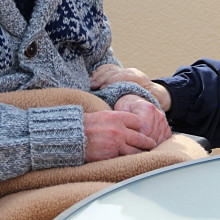
00:53 - Spotting signs of dementia early
Spotting signs of dementia early
Tim Rittman, University of Cambridge
People everywhere are living longer. But the downside of this is that we’re also succumbing in increasing numbers to diseases of old age, like Alzheimer’s. And, often, by the time we make the diagnosis, it’s likely too late to intervene with treatments to slow down or reverse the condition, or enrol people into trials to test potential therapies. But if we can detect who is going to develop these conditions well in advance, we have a much better chance of intervening and keeping a person healthier for longer, or finding the breakthrough drug that can do that. And that’s what Cambridge University’s Tim Rittman is trying to do, by looking for indicators of diseases like Alzheimer’s that are manifest nearly a decade before the disease becomes apparent…
Tim - What we really wanted to see was what was the earliest that we could pick up some of the subtle symptoms of Alzheimer's disease and other types of wear and tear disease to the brain. What we did was went to this incredible study called the UK Biobank and that has invited half a million people from around the country to come and have various tests, so memory and thinking tests and questionnaires about their day to day function. So we were able to look at the people from those half a million who went on to get these various types of dementia and other similar diseases and look back at how they had performed. Five to ten years before they'd got a diagnosis.
Chris - What did you find? Did you find there were some good indicators in there?
Tim - Yeah, we did particularly for, for Alzheimer's disease. So there's the largest number of people with Alzheimer's disease, about 2,700 people had developed that over the course of the study. And when we went back to their baseline first visit, people did worse on test of memories you might expect. They did worse on tests of what we call cognitive flexibility, sort of logic type tests and they did worse on things like reaction times. And this was specific to certain diseases. So there's another slightly rarer type of dementia called progressive supranuclear palsy and that has very poor balance. We found that people with this PSP disease were falling two to three times more than their healthy peers long before they had the diagnosis.
Chris - Why do these things manifest in that decade before the disease is overtly diagnosed?
Tim - We've always suspected this has been the case. Because if you look at brain scans for example, there's some types of dementia where we know people are going to get the disease and those are the types of dementia where people carry a gene for it. And in those genetic forms of dementia, we've seen changes in the brain 10 years beforehand. We've always suspected this has been the case in much more common types of dementia. But until now we haven't been able to look back in time and this study's been enabled us to be able to do that.
Chris - Are these sorts of predictors sufficiently specific though? Because falling over is a pretty common thing to happen. Many older people do that. They become weaker, their muscles are not as strong, so they are more prone to falls, for example. It doesn't mean they're at risk of progressive supranuclear palsy or Parkinson's or something. They might be, but they might equally not be. So is there not a danger we're going to drag in lots of the wrong people with these sorts of markers? Or do you think they are sufficiently specific that you think you can point the finger at someone and say, "with this constellation you are an x percent higher risk of Alzheimer's, so we're going to study you?"
Tim - Yeah, it's not that specific enough to say, yes, you're definitely going to get this disease in a few years’ time. But what we, what we can hopefully do is identify a group of people who are high risk so that we can enroll them into clinical trials. Because we suspect that if drugs are going to work for these diseases, they're going to work at the very earliest stages. So if you give these tests to a whole load of people, some people are going to do well, some people are going to do poorly. That doesn't necessarily mean that those people who do poorly are going to get dementia. But we know that they're at a higher risk and those are the people that we want to invite into trials for preventive studies and for new treatments.
Chris - So many of the people we're studying in trials at the moment, it's a bit late because they've already manifested the disease and we really gonna struggle to change the course of the disease or stop them deteriorating much beyond where they currently are. Whereas if you come in before it becomes much more overt, your argument will be you're heading it off before it worsens, so that their quality of life and ability to function is retained for longer.
Tim - Exactly. We suspect that the disease gathers pace as it progresses. So by the time you've had a diagnosis and you've got really obvious symptoms, it's very obvious on the brain scan that you've lost brain cells for example. We can't get those back, but if we can catch people at the very earliest stages, we have the best chance then of maintaining that function. That gives a real a window of opportunity to try and intervene early.
Chris - And just briefly, do you have any candidates or do we have drugs yet that might be able to do that so a company can come to you and go, "Thanks very much for showing us who we need to enroll in our trial now we're gonna do it."
Tim - To be honest, it's a really exciting time to be in this kind of research because there are lots of trials which are ongoing. There was an announcement by a company a couple of weeks ago about a drug called Lecaneamab, which potentially slows down the disease. I think we need a bit more information to know that for certain. But yeah, these trials are happening, so it's an exciting time.
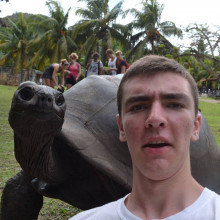
06:32 - Sequencing the Aldabra giant tortoise genome
Sequencing the Aldabra giant tortoise genome
Gözde Çilingir, University of Zurich
With all the talk of genome sequencing coming from last week's Nobel prizes, it seems apt that another member of the animal kingdom has had its genetic code sequenced: this time it’s the turn of the Aldabra giant tortoise, and this genetic data could come soon enough. As the name suggests, these gentle giants grow large: some get up to 300kg - as much as a grizzly bear - and they can live for 250 years. Regrettably, their numbers have plummeted since the 1800s as they came into contact with humans. Thankfully they are on the rise again thanks to conservation efforts, but restoring a population from such a small number of individuals means a lack of genetic diversity, making them vulnerable to diseases and environmental threats. So understanding their genome is vital in order to know who should mate with who, to minimise the risks of further inbreeding. Will Tingle spoke to the University of Zurich’s Gözde Çilingir...
Gözde - There are many Aldabra giant tortoise individuals all over the world. We don't actually know how much genetic variation remains outside of Aldabra. To understand such variation, we need a reference. And the only remaining wild population is the main information from the wild. But to understand what is remaining outside of their natural population is so important. First to understand overall diversity remaining out of a vulnerable species. Second, the zoos. There are some breeding efforts going on to increase the number of Aldabra giant tortoises and to better manage these breeding efforts, we need to understand which of the individuals come from which part of Aldabra, for example, and a reference genome and that population genetics analysis help us to understand and manage these breeding efforts.
Will - This study on a wider scale is about more than that because Aldabra giant tortoises act as ecosystem engineers to restore degraded island habitats. So understanding how better to conserve these tortoises should have knock on effects for the rest of their ecosystem as well.
Gözde - That's correct, because they are the largest herbivore of their ecosystems, they are basically one of the keystone species that have direct effects on the dynamics of the vegetation. There were many giant tortoise species living in the Western Indian Ocean Islands before, but only Aldabra giant tortoises were left in the wild. So Aldabra giant tortoises were effectively used for rewilding of the islands that once upon a time had their own giant tortoises and basically they substitute. The ecosystem rolls off that giant tortoise and helps resurrect the created habitats. So all the rewilding efforts mean another bottleneck for the species because basically a couple of individuals are chosen to be introduced into the wild. So if we could better manage these rewilded populations in terms of maximizing the genetic variation of these couple of individuals, then we could decrease the potential harmful effects of genetic drift, for example. And that may help us to ensure the long term survival of the rewilded populations where they were introduced.
Will - On a final point, could this sequencing extend to other tortoise species?
Gözde - Yes, it can. I mean, I think that's one of the things that amazes me a lot because at the end of the day, we produced a genomic tool that could be helpful not only for Aldabra giant tortoises, but also for other tortoise species that are endemic to Madagascar or East Africa or elsewhere. There are several reasons behind this. First of all in our work, in our paper, we show that the majority of the Aldabra giant tortoise genomics similar to other turtle species. And we also know that the evolutionary rate of tortoises is relatively lower than other vertebrates. So the Aldabra giant tortoise genome could be effectively used for other genomic conservation projects of these species, which is really exciting to me as a conservation geneticist because this tool could also be helpful for critically endangered tortoises in Madagascar, for example, and their genetic conservation.
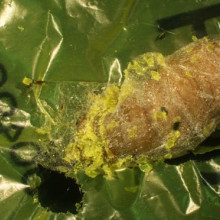
11:00 - Plastic degrading enzymes in wax worm saliva
Plastic degrading enzymes in wax worm saliva
Federica Bertocchini, Spanish National Research Council
The world uses over 500 billion plastic bags a year. Currently there are no feasible ways to manage our plastic waste. But, a few years back, we covered a story here on the programme where Cambridge University scientists discovered that an insect species called a wax worm appeared to be able to eat plastic! Now they’ve worked out how the animals do it: enzymes in the worm’s saliva can oxidise the plastic polymer molecules, meaning it might be possible to mass produce them and come up with an environmentally friendly solution to plastic pollution, as Risa Bagwandin heard from Federica Bertocchini…
Federica - If we think about plastic waste accumulation and the potential solutions we have, we can say that to date there's not much around. There's a little bit of recycling, which is not properly working, it is not solving the problem. Plastic is otherwise burnt, with the environmental cost or ends up in landfill sites. So the problem is huge and plastic production is not decreasing anytime soon. So we working on insect, in particular the wax worm. We found a few years ago that this insect was capable of degrading plastic. We managed to find the enzymes capable of doing that, and these enzymes have been found in the saliva of the worm
Risa - How fast can wax worm saliva breakdown plastic?
Federica - We see that in a few hours there is oxidation. And if we extend the time with more enzymes, this increases and we talk about hours 5, 6, 7 hours.
Risa - So this takes place in a matter of hours. And how does this compare to if plastic had to decompose on its own?
Federica - Now in the environment, when we think of a plastic bag thrown out there. It takes a long time. And the bottleneck of degradation is oxidation, which is the first step. And this can be overcome by these enzymes.
Risa - What conditions do these enzymes work in? Do we need any prior treatment of the plastic?
Federica - No pretreatment, plastic as it is, room temperature, neutral pH. That is it.
Risa - So we don't need any harsh conditions for this reaction or the enzymes to work on plastic?
Federica - No, not at all.
Risa - Do we know why these worms have these enzymes?
Federica - This is a good question. No, we don't know. And this is actually the next priority in research. We would like to know why they have this capacity and how they work.
Risa - Now that we've identified these enzymes, can we make them in the laboratory?
Federica - Yes. In fact, the enzymes we have been working on in the paper. They are recombinant proteins, meaning that they've been made in a lab.
Risa - And what do you envision as the potential application of these enzymes in terms of waste management?
Federica - What I envision is a system in which plastic can be degraded in a controlled environment. You may imagine piles of plastic collected and a watery solution poured on top of that.
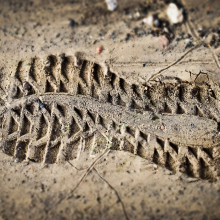
14:22 - Exoskeleton boot that learns how you walk
Exoskeleton boot that learns how you walk
Patrick Slade, Stanford University
When Nancy Sinatra sang 'these boots are made for walking' in 1965, she probably didn't foresee the unveiling by US scientists this week of robotic footwear that can make you move 9% faster and as though you were 13kg lighter. But that's what Stanford's Patrick Slade has come up with. His new "exoboots", he says, can give assistance to those who move less well with age or disease, and they can even make walking harder if needed to act as a training and strength-building device. The key is that these boots "learn" how you walk so they can intervene in the most effective way - like the foot equivalent of power-steering - to make your movements as efficient as possible...
Patrick - When you hear exoskeleton, you think Iron man. But realistically what it is, is it looks like a shoe with a piece that runs up the calf. And this piece has a motor that sits right behind your calf. What the device does is it puts a spring in your step where it helps provide a push-off assistance as you're walking by having the motor wind a cable which is attached to the heel of the shoe and inject some energy into your walk.
Chris - And how does it know when to do that?
Patrick - We use sensors on the device to figure out how you're moving. So for example, we have a pressure sensor in the shoe to detect when your foot's on the ground and if you've just hit the ground or if you're about to toe off, we have a sensor to understand your ankle motion. All of that information is collected by a little computer, which is worn on the exoskeleton. As it gets sensor data, it makes decisions on how to assist the person.
Chris - Can it make better decisions with time? Because everyone's gait is unique. I mean there was even a paper a few years back saying we can use CCTV footage of thieves and work out from their walk who they are <laugh>. Given the uniqueness of gait, can it adapt itself to the walker and the wearer?
Patrick - Yes, absolutely. So you are spot on. Everyone walks very uniquely, and this is one big challenge of providing effective assistance is how do you personalize it to each person? Because it turns out if you just have one assistance pattern and you slap it on everyone, it doesn't provide great benefits. A big part of our project was determining how you can look at their motion, so specifically your ankle motion and the force that you're applying. And from that learn how the exoskeleton is improving the efficiency or making it worse. So our device, over an hour of walking outside, tries out a bunch of different assistance patterns, figures out for you what is providing the best benefit and then figures out exactly what's gonna be the most beneficial form of assistance for you.
Chris - How does it know when it's getting it right?
Patrick - That's a great question. So in the lab we collected a ton of data where we had people walk with different types of exoskeleton assistance while measuring this energy expenditure. And then we train the model which can mount ankle motion and assistance data to end the expenditure. So once we've built this model, you don't have to come into the lab, you just put on the exo and we look at your motion as you move around and we can infer how beneficial certain assistance conditions are and from that we can personalize the assistance.
Chris - And how good is it? I mean, it's one thing to invent something like this and, as you say, pictures of Iron man and sort of go through your mind <laugh>, but if you take your average elderly person who doesn't get out much because they've lost confidence and they've lost strength, are we gonna see something game changing for them where they're gonna be able to make it to the park, make it to the shops?
Patrick - Yeah, I hope so. And I think so. So, in this study we performed experiments with young healthy adults and what we saw was when they wore our device that had personalized assistance to them it actually reduced their energy. And this was equivalent to removing a 13 kilogram backpack, which is a significant reduction in burden. And also it increased their walking speed by about 9%, which is clinically significant. And so now we're starting to think about and starting to perform studies with older adults to make sure that we can provide these same level of benefits. Early indications show that it's absolutely possible that we could provide increase in their daily mobility which will have an impact on their independence and what they like to do. And I like to think of it like an e-bike for example. My grandpa loves to bike. As he got older, he was able to do it less and less. We got him an e-bike and all of a sudden hills aren't a big problem and he can go for as long as he wants. And so hopefully this device will allow people to walk more easily and then they'll walk more and they'll do the things that they want to do.
Chris - Aside from just being supportive, could it also be interventional, as in therapeutics? So if you've got someone who's had a stroke, for example, they've got movement but it's weak or it's not optimal, could something like this be programmed to try to help them to restore better movement? So it's part of their rehab program?
Patrick - Absolutely. One big area of research is assisting different groups with muscle weaknesses. Stroke is a good example. These muscle weakness conditions can definitely benefit from augmenting movement. It can even be extended to things like injury recovery. So for example, if you injure your achilles tendon, you could put one of these boots on and reduce the load and then perhaps help with the recovery process and allow you to move more freely then. We can use the device to make walking harder to provide some sort of training. But there's a whole host of questions now that as we're getting close to being able to deploy these devices, that we want to make sure that we can really understand how it's gonna impact people's health.
Chris - The computer you can power with a couple of simple AA batteries, but how are you powering the motors? Because if you're putting that much effort, lifting big backpacks off of a person's shoulders effectively <laugh>, that's a lot of energy. Where is the person having to trail around on an extension lead, like a primitive remote controlled car, or can they actually take their power source with them?
Patrick - <laugh>? Fortunately, yes, it's all portable. So we use a portable battery right now. We have them wear the batteries in a little waist pack. 0.6 kilograms of battery gets you about 40 minutes of walk time and so you can swap them out if you run low. People typically walk about an hour and a half per day. So carrying two sets of batteries could potentially get you there.
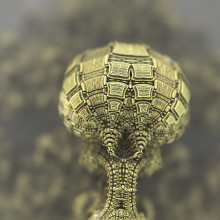
20:43 - How do dormant spores know when to wake up?
How do dormant spores know when to wake up?
Gurol Suel, University of California San Diego
Many of us have felt the urge to take a nap when times are stressful, and bacteria are no different. When faced with a long period of no food or water, some bacteria will enter dormancy, and reduce themselves down to a spore that may even be capable of remaining inactive for thousands of years. But how do these cells know when to wake up? The answer is that they can “count” and keep track of the number of times when nutrients become plentiful again. If a threshold is reached, indicating that conditions are persistently good, the cells reawaken. Gurol Suel, of the University of California San Diego, explained to Will Tingle how the cells he’s been studying can count the number of times he “pulses” them with nutrients…
Gurol - We were very surprised to find out that when we give them these very tiny pulses, even though the spore does not wake up, it does not return to life, it counts the number of pulses that they observe in their environment. And they can not only count them, but they either sum them, They sum them, and then if these signals reach a threshold, then the spore initiates the program to return back to life. And so that means that even though they're completely dormant and remain dormant, they're capable of integrating information from the environment and processing it in a way where they're actually performing a calculation. They're summing signals over time that are spaced apart. And this is very, very fascinating because they're doing this without any type of energy that we would classically associate with the living cell. This concept is usually associated with complex systems that use a lot of energy. And we saw that this dormant cell can do the same type of calculation without any of those sort of energetic processes.
Will - And so what do you think is behind this ability to count how many pulses have already occurred?
Gurol - Yeah, so we were inspired by our previous work that we published several years ago where we discovered that bacteria can generate action potentials. Electrical signaling, just like neurons in the brain. And that was a very, very sort of eye-opening discovery for us. And that made us think that maybe since the spores, in their dormant state, do not have access to energy production or protein synthesis or gene expression, maybe they were using some kind of electrochemical potential that would be stored in the spore to do work in the dormant state without requiring new synthesis of energy. So when the spores are being made, the spores store electrochemical potential, and that means that they're separating charges across a capacitor, which in this case would be the membrane. And you can then have that potential energy available to you later to do some kind of work. But all you have to do is just release it. You don't have to do anything active, so to speak.
Will - So you're saying that these tiny bacteria have evolved a biological capacitor, like the one found in your car, as a way of storing the pulses and then counting them and then deciding when conditions are good enough to wake up. Is the number of pulses that reanimate these bacteria the same across the board?
Gurol - Yeah, that's a great question. So the short answer is no, No two cells are gonna be completely identical in every aspect that you can measure, so can never be completely the same. And because we're looking at a capacitive electrochemical potential, as you're saying, because this capacitor defines the ability of the spore to count and how many counts it needs to do before it reaches a threshold. If there are any two spores that have, starting off, slightly different electrochemical potential levels, then they will differ in the number of counts that they do before they jump back to life.
Will - And to open up the scope a bit, when we look for extraterrestrial life, it'd be nice to think that there'd be faster than light spaceships or advanced civilizations or something like that. But realistically, it's far more likely that if we do find something, it could well be similar to a dormant spore. So how does this research change any potential plans we have to deal with something other worldly if we found it in a dormant state.
Gurol - If we find any type of life form on another planet or one of the moons of Jupiter, I think it's very likely that it's gonna be something very primitive. And if you think about Mars, Mars had habitable conditions millions of years ago, but not anymore. So anything that would have been able to survive would have to be in some kind of an extremely dormant state. And bacterial spores may represent the closest thing that we may find on another planet, and I think it's very intriguing to see that even if we find something that looks like a spore, and if you would just to look at a spore, it looks like an inert object. It doesn't look like it's alive because it's exhibiting none of the typical sort of behaviors associated with a life form. If we look at spores and we can see that even when they're dormant, even when they appear inert, they're still able to ponder and calculate whether or not to come out of their shelter or their bunker state. I think it's very intriguing in terms of how we would approach and how we would deal with any potential objects that we may find on other planets and any of these missions that may suggest to be some sort of living life form.
Related Content
- Previous Hate
- Next How do planes fly upside down?










Comments
Add a comment